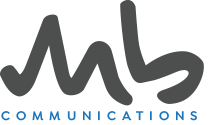PRESENTATION SKILLS HACK: INCREASE TRUSTWORTHINESS AND LIKEABILITY WITH YOUR NOTES
My dear friend and early morning work-out partner hopped into my car with her speaking notes at 5:30am this morning. She had a presentation later that day and asked if I would provide feedback. As she read through her notes, I was listening for any obvious areas of improvement. She was well prepared and had it locked down, of course. However, this did lead to an important conversation afterwards about delivery and speaking notes.
Often times, professionals spend most of their preparation time, focusing on what will be said. They figure out the purpose of their presentation, determine what information must be included and then try to order it in a manner that makes sense for the occasion and the audience. Rarely is enough prep time spent on how the message will be presented. This is quite the conundrum since judgements are often made on how we show up physically, during our presentations. If a speaker stares at their notes or slides and reads from it throughout the presentation, they will lose the trust and attention of their audience.
If you want others to trust you, believe you or be influenced by you… it may all come down to one important delivery fundamental-eye contact. Maintaining eye contact with your audience, be it one person or dozens, communicates confidence and credibility…often, without saying a word. It has also been shown to increase likeability, trustworthiness and attractiveness. When you prepare how you will delivery your presentation, you are more apt to make intentional decisions that affect your audience positively. Here is one simple trick to increase eye contact during your next presentation and it has everything to do with your speaking notes.
As I often tell my college students, they are not in Manuscript Reading class, they are in a Public Speaking class. Do not present from slides or notes written word for word. Remember the audience cannot read and listen to you simultaneously. If you want them to listen to you, do not have slides with a script available. Instead, use keywords and key phrases in your speaking notes that will trigger the exact wording at the time you present. This extemporaneous delivery style provides the benefit of a guide, keeping you on track, from point to point. It keeps your train of thought in order. At the same time, you won’t need to depend on paragraphs of long sentences that will force you to stay closely tied to your notes. A lack of eye contact with others greatly decreases the connection with your audience members. If you have full sentences on your notes, your eyes will naturally gravitate to the notes instead of the eyes of your audience.
Often, I will hear a hesitation to adopt this practice of keywords on notes because it leaves a smaller safety net to fall back on. Many prefer to read a script to ensure that the proper words will come out instead of completely forgetting everything when all eyes on are them during the presentation. However, reading from a script looks as though the speaker is not well prepared or confident in their materials. Both of these sentiments inspire doubt in the speaker. Credibility and trustworthiness plummets when the audience (no matter how big or small) begins to doubt the speaker.
Next time you have to present in front of an audience, think not only about what you will say but how… but only if you care about increasing trustworthiness, likeability and credibility among your audience.
This is an excerpt from Meg’s new book, “Put Your Big Girl Pants On…and Other Power Moves to Increase Influence,” now available for purchase on BookBaby and Amazon.
Meg Bucaro is a communication strategist and college adjunct faculty who is passionate about positioning women for success by teaching them powerful communication behaviors. For more information on how to increase your credibility, likeability and influence, schedule a chat with Meg. or follow Meg Bucaro Communications on Instagram or Linkedin.


